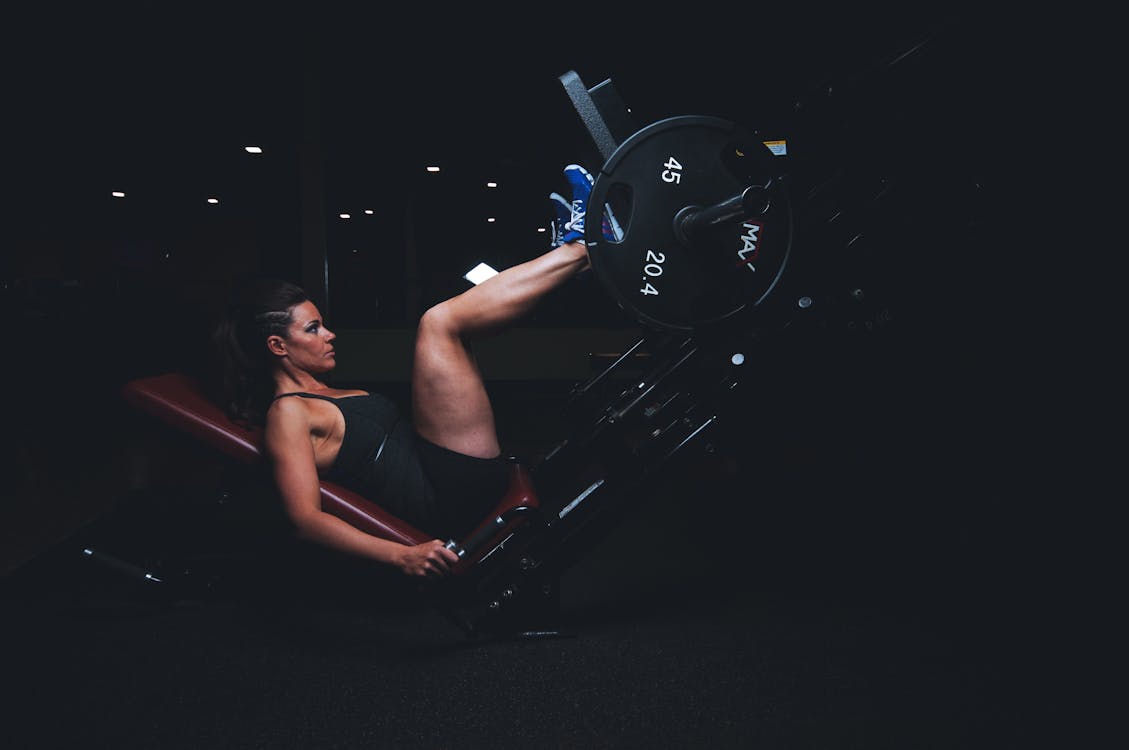Female bodybuilders tend to limit the amount of cycling they do. Aerobic exercises only work on endurance muscle fibers, turning them more resistant to fatigue with training. However, they don’t bulk you up. Even after hours of cardiovascular conditioning or cardio, it won’t improve women’s body composition.
Instead, women have to build muscle regularly to see muscle definition. They need to lift weights, eat enough protein, and check the rest of their nutrition. If they want to bulk more, they need to eat in a caloric surplus of about 10% to promote lean muscle growth and do strength training at least four to five days a week.
However, riding your bike still comes with a lot of health benefits. Here are six ways cycling improves female bodybuilders’ overall well-being.
Table of Contents
Add Muscle Mass
Cycling improves your lower body’s overall function and strength since paddling activates your quads, glutes, hamstrings, and calves. It’s also especially recommended if you’re currently suffering from joint conditions on the hips resulting from excessive or improper weight training.
Many women tend to store their excess fats in their lower half, so cycling can be a helpful way to get rid of them. However, take note that cycling only tones your lower extremities. As mentioned earlier, cycling improves your gluteal muscles to resist fatigue and strengthen them, but not bulk up.
Specifically, cyclists with super high thigh circumference (called cyclist’s legs) usually have strong quads, not big. Professional cyclists tend to do long, slow, steady-state rides for 15 to 20 (or more) hours a week. This puts them in a fat-burning zone, where they decrease fat and increase their muscle mass—but not necessarily bigger body composition.
Core Strength
Your lower half isn’t the only powerhouse in cycling. Your abdominal muscles and core stability can also be improved when cycling because you need to maintain your balance on your bike.
Balancing your body’s center of mass on moving wheels fires up your lower back, abdominal, and hip muscles. This is particularly true for outdoor riding over rougher terrain, where shifting directions to avoid obstacles is necessary.
Having a stronger core has a ripple effect on your optimal health. A strong core prevents back pain, tension headaches, and energy slumps. Further, with better core strength and stability, you can efficiently move during strength training.
Improve Cardiovascular Health
Like other types of aerobic exercise, cycling challenges our heart, lungs, and muscular system in a good way. It can enhance cardiovascular function, including blood pressure and circulation.
It also improves aerobic capacity or cardiopulmonary capacity. It’s our cardiovascular system’s ability to provide oxygen to our working muscles, allowing us to keep doing strenuous activities for longer periods of time. A higher aerobic capacity reduces the risk of cardiovascular diseases (CVDs), diabetes, hypertension, metabolic syndrome, and dementia.
Promote Bone Health
Women are very prone to osteoporosis, mainly for two reasons. First, women naturally have small and thin bones. Second, estrogen sharply decreases when they reach menopause. It’s a hormone that protects bones, so a lower level of it can cause bone loss.
To improve bone density, experts recommend women indulge in higher-impact activities like cycling. One research showed that these activities promote bone strength and improve stability due to upper-body muscle engagement. Both can lead to better bone structure and healthier aging.
Boost Mental Health
As a physical activity, cycling can help release feel-good endorphins. They’re hormones involved in our body’s stress relief and pain management. Having enough endorphins can lower your stress levels and make you feel better.
It can also improve cognitive functions. For example, cycling helps build new brain cells in our hippocampus, which is responsible for our memories. This is significantly beneficial for women since they’re more affected by dementia than men.
Better Sleep Quality
One research review found that cycling about two hours before bed can improve sleep quality. As you cycle, you can raise your core body temperature quickly. As a result, your body can balance heat surge with cool-down mechanisms, regulating your temperature efficiently. It’s then carried into bedtime, helping you fall and stay asleep.
Other studies argued that since cycling eases feelings of stress, depression, or anxiety, which are causes of insomnia, it can improve one’s sleep quality. Another cause of sleep dysfunction is weight gain with age. Cycling also promotes good weight management, so it can also help you have a sound sleep at night.
How to Cycle Safely and Enjoy Your Ride?
Always check and wear your equipment before riding. On the road, ensure that other drivers can see you, so better ride during the day whenever possible. If you prefer riding at night, install lights on your bike and wear reflective clothing.
It might be a good idea to get online health insurance quote beforehand. In the United States, bikes are only 1% of all trips, yet 2% of traffic collision fatalities involve bicyclists. You’ll never know what’ll happen on the road, so you better get insured as soon as possible.
Final Thoughts
Cycling is a healthy, fun, and low-impact form of workout for all ages. It’s easy to fit into your daily routine too. Plus, cycling to your destination makes you fit, saves money, and protects the environment.



